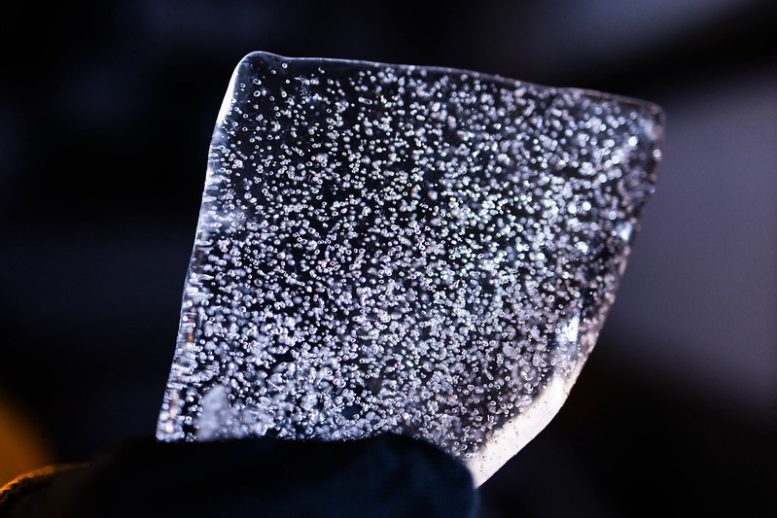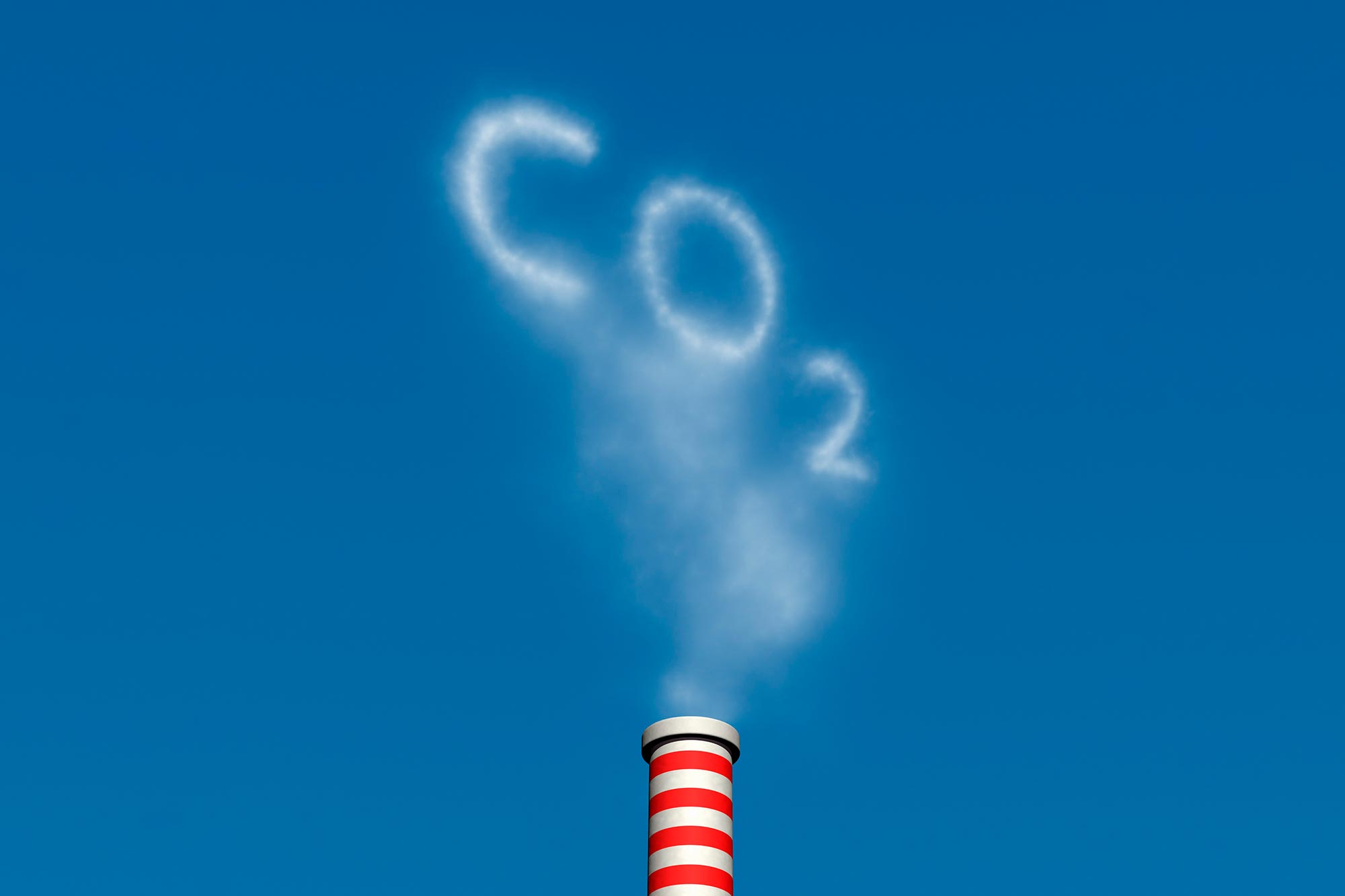Recent research indicates that the current rate of atmospheric CO2 increase is unprecedented, being ten times faster than any period in the last 50,000 years, highlighting significant implications for global climate dynamics and future CO2 absorption capabilities of the Southern Ocean.
Researchers conducting a detailed chemical analysis of ancient Antarctic ice have discovered that the current rate of increase in atmospheric carbon dioxide is 10 times faster than at any point in the last 50,000 years.
The findings, just published in the Proceedings of the National Academy of Sciences, provide an important new understanding of abrupt climate change periods in Earth’s past and offer new insight into the potential impacts of climate change today.
“Studying the past teaches us how today is different. The rate of CO2 change today really is unprecedented,” said Kathleen Wendt, an assistant professor in Oregon State University’s College of Earth, Ocean, and Atmospheric Sciences and the study’s lead author.
“Our research identified the fastest rates of past natural CO2 rise ever observed, and the rate occurring today, largely driven by human emissions, is 10 times higher.”
Carbon dioxide, or CO2, is a greenhouse gas that occurs naturally in the atmosphere. When carbon dioxide enters the atmosphere, it contributes to the warming of the climate due to the greenhouse effect. In the past, the levels have fluctuated due to ice age cycles and other natural causes, but today they are rising because of human emissions.
Ice Core Analysis in Antarctica
Ice that built up in the Antarctic over hundreds of thousands of years includes ancient atmospheric gasses trapped in air bubbles. Scientists use samples of that ice, collected by drilling cores up to 2 miles (3.2 kilometers) deep, to analyze the trace chemicals and build records of past climate. The U.S. National Science Foundation supported the ice core drilling and the chemical analysis used in the study.
Previous research showed that during the last ice age, which ended about 10,000 years ago, there were several periods where carbon dioxide levels appeared to jump much higher than the average. But those measurements were not detailed enough to reveal the full nature of the rapid changes, limiting scientists’ ability to understand what was occurring, Wendt said.

A slice from an Antarctic ice core. Researchers study the chemicals trapped in old ice to learn about past climate. Credit: Katherine Stelling, Oregon State University
“You probably wouldn’t expect to see that in the dead of the last ice age,” she said. “But our interest was piqued, and we wanted to go back to those periods and conduct measurements at greater detail to find out what was happening.”
Using samples from the West Antarctic Ice Sheet Divide ice core, Wendt and colleagues investigated what was occurring during those periods. They identified a pattern that showed that these jumps in carbon dioxide occurred alongside North Atlantic cold intervals known as Heinrich Events that are associated with abrupt climate shifts around the world.
“These Heinrich Events are truly remarkable,” said Christo Buizert, an associate professor in the College of Earth, Ocean, and Atmospheric Sciences and co-author of the study. “We think they are caused by a dramatic collapse of the North American ice sheet. This sets into motion a chain reaction that involves changes to the tropical monsoons, the Southern hemisphere westerly winds, and these large burps of CO2 coming out of the oceans.”
Comparison of Natural and Current CO2 Increases
During the largest of the natural rises, carbon dioxide increased by about 14 parts per million in 55 years. And the jumps occurred about once every 7,000 years or so. At today’s rates, that magnitude of increase takes only 5 to 6 years.
Evidence suggests that during past periods of natural carbon dioxide rise, the westerly winds that play an important role in the circulation of the deep ocean were also strengthening, leading to a rapid release of CO2 from the Southern Ocean.
Other research has suggested that these westerlies will strengthen over the next century due to climate change. The new findings suggest that if that occurs, it will reduce the Southern Ocean’s capacity to absorb human-generated carbon dioxide, the researchers noted.
“We rely on the Southern Ocean to take up part of the carbon dioxide we emit, but rapidly increasing southerly winds weaken its ability to do so,” Wendt said.
Reference: “Southern Ocean drives multidecadal atmospheric CO2 rise during Heinrich Stadials” by Kathleen A. Wendt, Christoph Nehrbass-Ahles, Kyle Niezgoda, David Noone, Michael Kalk, Laurie Menviel, Julia Gottschalk, James W. B. Rae, Jochen Schmitt, Hubertus Fischer, Thomas F. Stocker, Juan Muglia, David Ferreira, Shaun A. Marcott, Edward Brook and Christo Buizert, 13 May 2024, Proceedings of the National Academy of Sciences.
DOI: 10.1073/pnas.2319652121
Additional co-authors include Ed Brook, Kyle Niezgoda, and Michael Kalk of Oregon State; Christoph Nehrbass-Ahles of the University of Bern in Switzerland and the National Physical Laboratory in the United Kingdom; Thomas Stocker, Jochen Schmitt and Hubertus Fischer of the University of Bern; Laurie Menviel of the University of New South Wales in Australia; James Rae of the University of St. Andrews in the United Kingdom; Juan Muglia of Argentina; David Ferreira of the University of Reading in the United Kingdom and Shaun Marcott of University of Wisconsin-Madison.
The study was funded by the U.S. National Science Foundation.

Daisy Hips is a science communicator who brings the wonders of the natural world to readers. Her articles explore breakthroughs in various scientific disciplines, from space exploration to environmental conservation. Daisy is also an advocate for science education and enjoys stargazing in her spare time.








